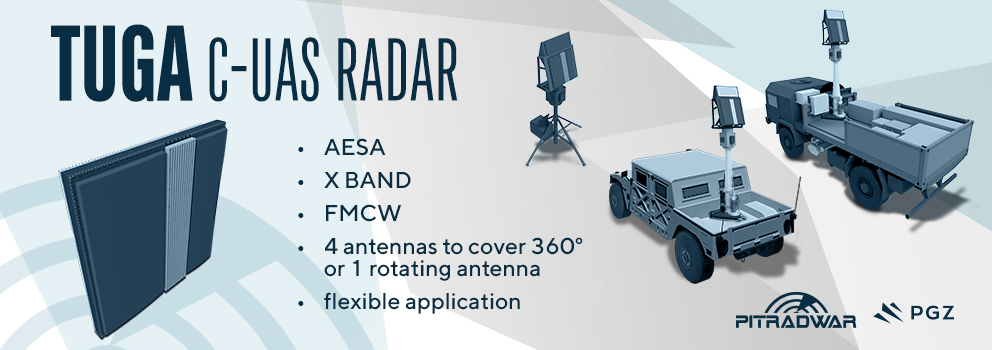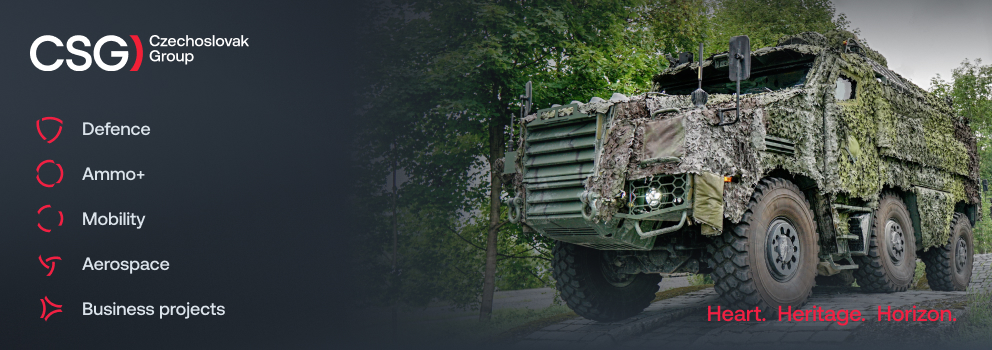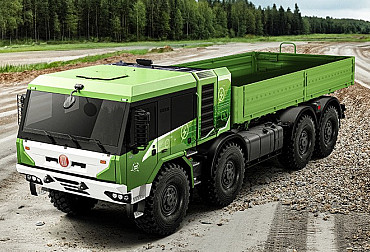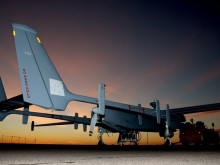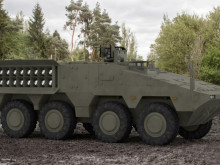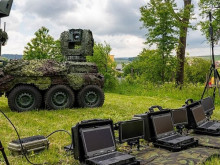Drone hunters from Hamburg: A new era of European airspace protection
The scale of drone attacks that have hit European airspace in recent weeks poses an unprecedented security challenge. A series of unidentified drones have disrupted operations at several airports and military bases across the continent, from Munich to Frankfurt to the Danish military base in Karup. These actions may have Russian origins and are testing Europe's ability to respond to asymmetric threats. Danish Prime Minister Mette Frederiksen called the incidents over Copenhagen Airport "the most serious attack on Danish critical infrastructure in history." German Interior Minister Alexander Dobrindt announced plans to equip the police with new units to defend against drones.
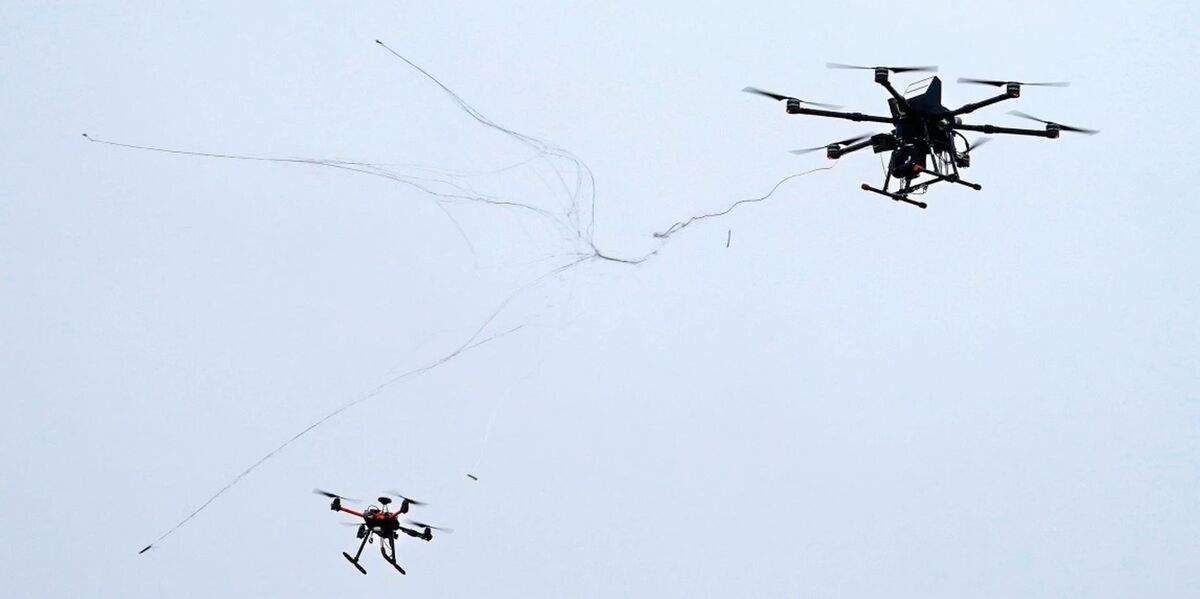
These events show that the phenomenon of drone attacks has long since gone beyond the scope of war zones and has become a strategic weapon of hybrid warfare. Attacks can paralyze air traffic, undermine security measures, and test the response time of NATO countries. In Poland, around 20 Russian drones entered the airspace, only a few of which were shot down by F-35 aircraft. "We must stop just reacting and start acting," warned Sven Steingräber, co-founder of the German company Argus Interception. His statement accurately captures the current problem—Europe is facing a new form of attack, both technologically and doctrinally, against which traditional air defense systems (such as Patriot air defense systems) are neither economically nor operationally effective. As Steingräber explains, "the attacker uses drones costing a few thousand euros, while the defense spends millions."
It is precisely this imbalance that has led to the rapid development of new active defense systems against unmanned aerial vehicles (C-UAS – Counter-Unmanned Aerial Systems). Among the pioneers is the aforementioned Argus Interception, which originated from the FALKE (Fähigkeit des Abfangens von in gesperrte Lufträume eindringenden Kleinfluggeräten durch zivile Einsatzmittel) project led by Helmut Schmidt University in Hamburg. FALKE was originally focused on protecting airports from illegal drones, which have crippled the British airports of Gatwick and Heathrow several times since 2018. As Professor Gerd Scholl, head of the research team, said, "the concept is also transferable to the protection of critical infrastructure," and its main innovations include the physical neutralization of hostile systems. However, this is not done by shooting them down, but by capturing and towing them away with a net. This technology was later taken over by former Bundeswehr soldiers, including Sven Steingräber, who transformed it into a commercial product called A1-Falke.
"Our drones simply get in the way of the enemy drones and physically intercept them," says Steingräber with his typical emphasis on simplicity, which masks the technological sophistication of the entire system. The A1-Falke is a 25 kg unmanned system equipped with three launch nets, radar, and an optical camera. The system operates autonomously—after identifying the target, the drone performs the maneuver itself and, at the decisive moment, fires the net to capture the target. The success rate of the intervention is over 95%. "All you have to do is press the start button and give permission to launch the net. Artificial intelligence takes care of the rest," adds Steingräber.
Argus Interception's solutions avoid radio-electronic warfare methods. Russia is increasingly using optical cables instead of radio transmission, rendering conventional jammers virtually ineffective. "We don't care what frequency the enemy is communicating on," Steingräber emphasizes. "Our solution is physical and therefore universal." It is precisely this physical neutralization without destroying the target that opens up new possibilities for the civilian sector – the protection of airports, power plants, or industrial zones where the use of firearms would be unacceptable.
The Bundeswehr has already taken delivery of the first batch of A1-Falke systems and will receive a total of 160 units by 2027. "By supplying our drones, we are contributing to the operational security of the armed forces," said Steingräber at the handover. According to him, the systems are manufactured exclusively in Germany, which increases their credibility in terms of security standards and the supply chain. At the DSEI arms fair in London, Argus Interception drones were, in his words, "constantly surrounded by interest from foreign delegations." Demand for them is growing, especially after a series of attacks on Polish and Baltic airspace.
Europe thus finds itself in a paradoxical situation – while individual states are still debating the parameters of a "drone wall" along NATO's eastern border, technological solutions already exist. "We need three layers," explains Steingräber. "Detection systems, verification sensors, and effectors such as our Interceptor." The goal is to create a system with a range of five kilometers that can respond immediately and at minimal cost. Cost is a key factor here. While a single interception flight costs only a few hundred euros, a single missile shot down means a loss in the millions. "Our device can be used repeatedly," adds Steingräber. "And the operating costs are a fraction of the price of ammunition."
From a military economics perspective, this is a breakthrough approach. In a situation where Russian forces are testing European defenses with cheap drones, every shot fired from the Patriot system is an economic loss. Projects such as Argus A1-Falke offer a cost-effective defense option that is scalable and technically autonomous. Germany is apparently planning to integrate these drones into a broader concept of national defense of critical infrastructure.
This technology looks attractive for the Czech Republic in several dimensions. From an operational point of view, systems such as A1-Falke could be deployed to protect military bases, airports, or nuclear facilities where there is a high risk of sabotage or reconnaissance using small drones. As German experience suggests, Argus Interception's solutions are open to integration with various detection sensors. This is an advantage for Czechia, as it allows compatibility with domestic technologies to be tested without interfering with their structure. From an industrial point of view, there is the possibility of Czech participation in the form of subcontracting sensors, servicing, or training. If Czech companies manage to enter the emerging supply chain, they can expand their strategic know-how in the field of combining artificial intelligence and mechatronics.
Steingräber repeatedly emphasizes that his system is intended to be not only a military tool, but also a civilian defense tool. "Our technology protects critical infrastructure," he says. "It's not just about the military, but about making people in Europe feel safe." This approach could also be inspiring for the Czech Republic, where the role of the army and police in protecting key facilities urgently needs to be clarified. Similar systems could be tested at Čáslav Airport, for example, which is a key base for the Czech Air Force and will host F-35 fighter jets in a few years. Protecting them from reconnaissance or disruptive drones will become essential in the future. Other possible locations include the Dukovany and Temelín nuclear power plants, where explosives cannot be used to physically neutralize drones.
From a strategic policy perspective, this is an opportunity to deepen cooperation with Germany in the field of defense innovation beyond traditional projects (such as the acquisition of Leopard tanks). Argus Interception remains a purely German company without a strategic investor, which opens up space for foreign capital to expand production. The Czech defense industry, which has long been strong in the field of electronics and sensor technology, can gain access to the rapidly developing European security segment.
In the context of the growing number of incidents that Europe has been experiencing since September, the ability to respond to low-cost but highly effective drone attacks will determine the resilience of the entire continent. "We should not waste time," warns Steingräber. "We need to build capabilities now, not after the next incident." His words sound all the more urgent when we realize that there are machines flying over Europe whose origin no one knows for sure. Their impact could be fatal—whether it be the paralysis of transport or sabotage of critical infrastructure.
The Czech Republic has a unique opportunity to become part of the emerging European concept of a "drone wall" – not only as a passive observer, but also as an active partner. Systems such as A1-Falke represent more than just technology. They symbolize a new era of defense, where algorithms, sensors, and networks will be the main weapons instead of missiles. As Steingräber says, "it's not just about catching a drone – it's about catching the future before it flies away."
